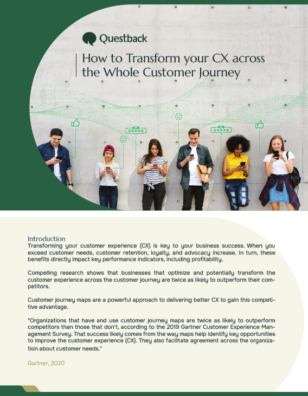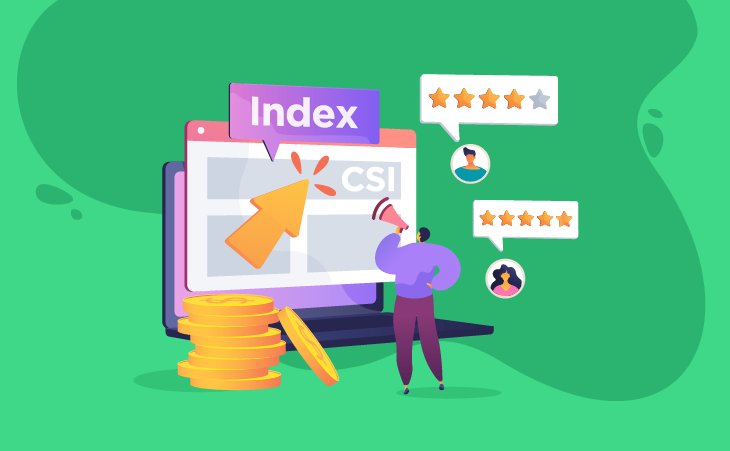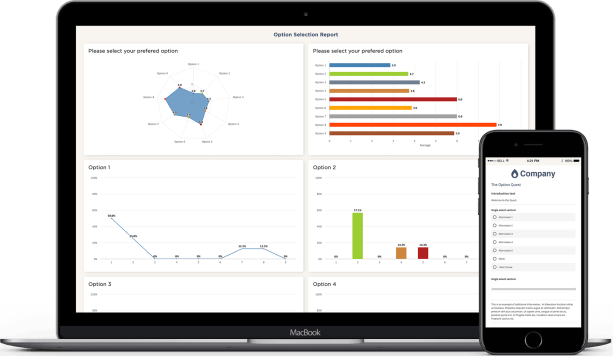CSI (Customer Satisfaction Index) – the complete guide


Satisfying customer wants and needs is a top priority for any business. Moreover, satisfied customers are more profitable and loyal and spread positive word of mouth. This makes the Customer Satisfaction Index (CSI) a must-have metric to continuously keep front of mind. In this article, we share what CSI involves, how to measure it, outline its benefits, and highlight 7 best practices to maximize its effectiveness and value.
What is the Customer Satisfaction Index?
The Customer Satisfaction Index (CSI) is a headline metric that measures the extent customers are satisfied with an organization or a specific product or service.
Its defining characteristic and benefit is its holistic, integrative nature. This means that CSI doesn’t just measure overall satisfaction. It also sheds light on which aspects of your business offering are meeting, exceeding, or failing needs.
CSI is a crucial metric to consistently measure over time, as overlooking or failing to meet or exceed customer needs can negatively impact your business’s revenues, profitability, and brand equity.
In short, if used well, CSI is a proven and robust tool to measure customer satisfaction. But why, exactly, is CSI a popular insight tool?
Table of Content
- Key Benefits of CSI
- How Do You Measure CSI?
- The Difference between CSI and the Customer Satisfaction Score
- Building a Weighted Customer Satisfaction Index
- Seven Best Practices in Using Customer Satisfaction Index
- Final Thoughts
Try Questback 14 days for free.
Key Benefits of CSI
There are several compelling reasons why CSI is a key metric that adds value to your business.
- Flexibility: This index is far more flexible than single indicators, such as the Net Promoter Score. CSI affords your business the opportunity to measure and improve what matters most to your customers. For instance, product quality and the shopping experience will likely be essential if your business is retail-oriented. In contrast, an accountancy firm will likely prioritize reliability and trust.
- Identify and Prioritise Opportunities: When you continuously track the CSI metric, you can spot, prioritize, and exploit opportunities to iteratively improve customer satisfaction to maintain and build your competitive advantage.
- Increase Customer Retention: Customer satisfaction builds loyalty. In turn, loyalty compounds results. As is often said, loyal customers are far more cost-effective and value-adding. Less is spent on customer acquisition. Moreover, loyal customers spend significantly more and organically attract customers by spreading positive word of mouth.
- Detect Issues Quickly: In today’s fast-paced, hyper-competitive world, you must detect issues and act quickly. Customers will likely churn and spend their money elsewhere if your business is too slow to act.
Given these tangible benefits, we now turn to how CSI is measured.

How Do You Measure CSI?
As an index, it provides a holistic measure that captures each known attribute contributing to customer satisfaction. Therefore, it typically involves a simple calculation:
[sum of each identified attribute / total number of attributes] = CSI
Imagine a company’s flagship product is a digital marketplace, whose CSI consists of four core attributes, or dimensions, with the following attribute scores:
- Customer Service – 63
- Marketplace Usability – 72
- Product Quality – 56
- Price – 82
How to Calculate Customer Satisfaction Index (CSI)
Using the formula above, the CSI, in this case, would be:
[63 + 72 + 56 + 82 /4 ] = 68%
But what if each attribute is not equally important for customer satisfaction? For instance, if price is far more important than product quality. If this is the case, we recommend constructing a weighted index. However, to weight your index, it’s first essential to understand the difference between the CSI and CSAT scores.

The Difference between CSI and the Customer Satisfaction Score
Don’t confuse CSI with CSAT — the Customer Satisfaction Score.
A key difference is that a CSI is an index, whereas a CSAT is a measure. For example, by asking, “How satisfied are you with X, Y, or Z?”, customers provide their satisfaction rating for a specific attribute along either a 5, 7, 10, or 11-point response scale, ranging from, let’s say, “Very Dissatisfied” to “Very Satisfied”.
This means your CSI could be constructed with all, or your most important, CSAT scores.
Therefore, your CSI score will be built by integrating relevant CSAT measures. But which CSAT scores are the most important contributors to customer satisfaction?

How to increase your CSI by improving the Customer Journey
Do you want to create an excellent customer experience? Gain competitive advantages, increase profits, and improve your Customer Satisfaction Index?
Building a Weighted Customer Satisfaction Index
While nothing stops your team from using expert judgments on what matters most to customer satisfaction, it’s always best to rely on data. According to research, direct customer reports and statistical testing offer two methods to build a weighted CSI.
With direct consumer reports, ranking is often undertaken. This involves inviting your customers to rank what’s most important, for instance, by allowing them to allocate different scores against different attributes. This method reveals how relatively important each attribute is through the eyes of your customers.
However, ranking may not be feasible. For instance, CSAT scores may be measured at different touchpoints across the customer journey. And this makes perfect sense — the experience will be fresh in your customers’ minds, e.g., immediately after receiving customer service support.
Yet, it’s unlikely you can measure all customer touchpoints in one session. So, what’s the alternative approach to assign attribute weights?
You can collate CSAT scores measured at different times/touchpoints and undertake statistical tests. Then you can inspect the data (e.g., attribute factor loadings), to better understand their relative importance when factored together.
Let’s return to our earlier example. Suppose that due to inflation, prices go up; this, let’s say, subsequently decreases customer satisfaction by a whole point. Also, imagine that price is far more critical than other attributes.
With an unweighted index, a point drop in price satisfaction will have the same influence on your CSI score as with an equivalent drop in another attribute. But with a weighted index, price would have a bigger influence on your CSI and hence flag a more serious issue as it’s far more critical.
While some consider a weighted index as best practice, there are seven other factors to consider to get the most out of your CSI.
Seven Best Practices in Using Customer Satisfaction Index
1: Integrate What Matters Most
By its very nature, an index integrates a suite of attributes. Therefore, its value depends on what makes up your CSI. And this means making sure that your CSI captures the most important attributes that influence overall customer satisfaction. To do this well, regularly measure satisfaction across each identified customer touchpoint across the customer journey to gain the big picture.
2: Select Unique Attributes
While there is bound to be some overlap, with a well-constructed index, you must select indicators that uniquely contribute to customer satisfaction. For instance, price and value for money may overlap too much. Instead, use data analysis to determine which attributes contribute most to customer satisfaction, and select the indicator that best explains that core attribute.
3: Check For Missing Attributes
Once you’ve identified important, unique attributes, it’s worthwhile undertaking a regression analysis. To what extent do your identified attributes explain variance in overall customer satisfaction? If your regression model lacks explanatory power, then it’s important to recheck your customer journey. What are you missing that could provide more valuable insights?
4: Make It a Prominent Dashboard Feature
It’s vital that you don’t take your eye off the ball. Today, a dashboard featuring your key performance indicators is a must. As the CSI captures much critical information, consider featuring your CSI score as a headline indicator. If change is detected, you can quickly drill down to view and act on what’s behind the change in customer satisfaction.
5: Adopt Benchmarking
Human memory is fallible. Therefore, use your initial CSI score to benchmark against future scores. What’s more, if you plot your CSI data as a time series, you can see changes in a glance, just like you can with a stock index.
6: Use A Reputable Insight Provider
As valuable as CSI is, its value is influenced by an insight tool’s design, delivery, and reporting. That’s why we recommend using a reputable insight provider like Questback. As your insight partner, the Questback team ensures that all clients’ measurements and indexes are easy to use, reliable, and valid.
7: Act Decisively on Insights
Any fall or rise in your CSI deserves timely attention and action. For instance, if you detect an increase, you’ll quickly discern your responsible attribute(s). More importantly, this provides an opportunity to reward those people and initiatives that caused this upturn. Likewise, acting decisively is essential if your CSI score takes a turn for the worse. Even better, if you use a weighted index, you can focus on attributes with high importance and low performance to leverage the most positive change.

The history of CSI and ACSI
The Customer Satisfaction Index (CSI) took shape in Sweden in 1989 with the launch of the Swedish Quality Index (SKI), originally known as the Swedish Customer Satisfaction Barometer (SCSB). This index was one of the first to measure customer satisfaction at a national level systematically. Inspired by the success of the SKI, the American Customer Satisfaction Index (ACSI) was later developed in the United States. This initiative was led by Claes Fornell at the University of Michigan and adapted the Swedish model to a broader American economic and cultural context. ACSI has since established itself as a benchmark for measuring customer satisfaction in the US and has inspired the creation of similar indices globally.
Try Questback 14 days for free.
The man behind ACSI
Claes Fornell, a distinguished professor emeritus of business administration at the University of Michigan, is the mastermind behind both the CSI and the ACSI. As the founder of these influential indices, Fornell has played a crucial role in how companies measure and work with customer satisfaction. His research and development of methodologies to measure customer satisfaction has changed not only business practices in Sweden but also globally.

Fornell’s work emphasizes the importance of understanding customer experiences and feedback to drive improvements in business products and service offerings. Through his dedication and innovative methods, Fornell has helped make customer satisfaction a central part of strategic planning and long-term value creation for companies around the world.
Final Thoughts
The value offered by a well-constructed CSI should capture what matters most to your customers. By integrating those attributes, or CSAT scores, into a CSI, you will have the profitable opportunity to fix mistakes and continuously maintain and build your customer satisfaction levels to maintain your competitive advantage.
FAQ
Don’t confuse CSI (Customer Satisfaction Index) with CSAT — the Customer Satisfaction Score.
A key difference is that a CSI is an index, whereas a CSAT is a measure. For example, by asking, “How satisfied are you with X, Y, or Z?”, customers provide their satisfaction rating for a specific attribute along either a 5, 7, 10, or 11-point response scale, ranging from, let’s say, “Very Dissatisfied” to “Very Satisfied”.
This means your CSI could be constructed with all, or your most important, CSAT scores.
Therefore, your CSI score will be built by integrating relevant CSAT measures
The Customer Satisfaction Index (CSI) is a headline metric that measures the extent customers are satisfied with an organisation or a specific product or service.
Its defining characteristic, and benefit, is its holistic, integrative nature. This means that CSI doesn’t just measure overall satisfaction. It also sheds light on which aspects of your business offering are meeting, exceeding, or failing needs.
CSI is a crucial metric to consistently measure over time, as overlooking or failing to meet or exceed customer needs can negatively impact your business’s revenues, profitability, and brand equity.
Read more in our complete guide about CSI.
As an index, it provides a holistic measure that captures each known attribute contributing to customer satisfaction. Therefore, it typically involves a simple calculation:
[sum of each identified attribute / total number of attributes] = CSI
Imagine a company’s flagship product is a digital marketplace, whose CSI consists of four core attributes, or dimensions, with the following attribute scores:
Customer Service - 63
Marketplace Usability - 72
Product Quality - 56
Price - 82
Use this formula to calculate:
[X + X + X + X /X ] = X%
Add the different scores and divide it on the total number of areas you measure.
Imagine a company’s flagship product is a digital marketplace, whose CSI consists of four core attributes, or dimensions, with the following attribute scores:
Customer Service - 63
Marketplace Usability - 72
Product Quality - 56
Price - 82
Using the formula above, the CSI, in this case, would be:
[63 + 72 + 56 + 82 /4 ] = 68%

Try Questback
Questback is a leading Customer and Employee Experience solution that makes it easy to collect, analyse and take action on key stakeholder insights.









